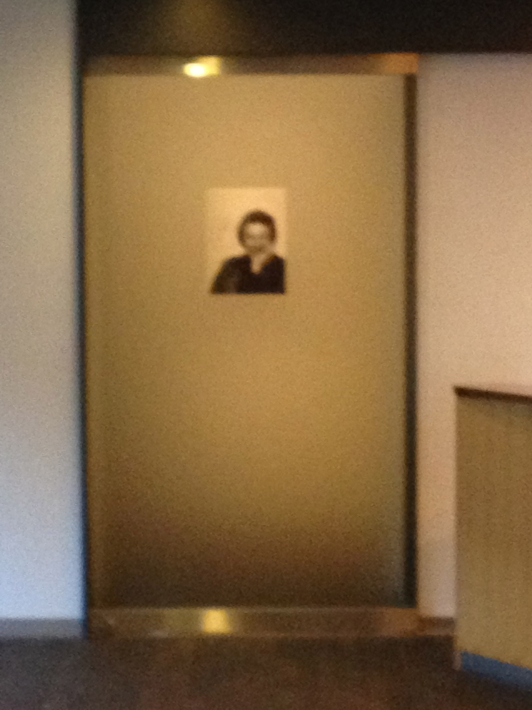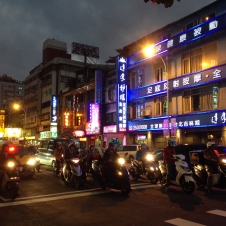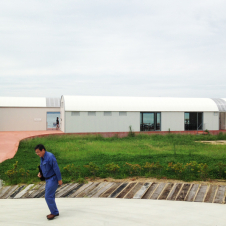DAYS_
Considering Juzo Itami a dead person
January 12, 2015 /
On the New Year’s Day, I was sucked up with my car by the ferry, and I left Saganoseki Port. Since the day before, a low-pressure system affected the area and the sea was rather rough, in addition it was very cold. My wife decided to take some medication for seasickness end pretended to sleep, so I took a walk alone on deck. The strong wind didn’t cause problems, and after just one hour and half we arrived in Misaki Port, near the sharp point of Cape Sada in Shikoku.
 Looking for old pottery ware, once I crossed the Baltic Sea in winter and I reached Bornholm Island, when was it? Last year I went to Vancouver Island looking for Native American crafts. Now I know that if I had a small Garmin GPS device, after crossing the sea and landing on the island, I could easily find the place I’m looking for. It’s beautiful reaching the shore slowly, after the island gradually becomes closer. I absolutely prefer the feeling of arriving in a place slowly, not like on a plane, where you are carried anywhere without perceiving it.
Looking for old pottery ware, once I crossed the Baltic Sea in winter and I reached Bornholm Island, when was it? Last year I went to Vancouver Island looking for Native American crafts. Now I know that if I had a small Garmin GPS device, after crossing the sea and landing on the island, I could easily find the place I’m looking for. It’s beautiful reaching the shore slowly, after the island gradually becomes closer. I absolutely prefer the feeling of arriving in a place slowly, not like on a plane, where you are carried anywhere without perceiving it.
The main purpose of this trip was to visit the Itami Juzo Museum in Matsuyama. Maybe I was in the junior high school, when I discovered him as an international actor who can speak English in the movie “Lord Jim”. Then, I was probably an university student when I read “Diary of boredom in Europe”, and after that I wanted to eat spaghetti “al dente”. Finally I was an adult when I watched the movie “The Funeral”. It was like Ozu mixed with Godard. Humor and satire, plus a free and sharp style in which he was unrivaled.
The Itami Juzo Museum, designed by Yoshifumi Nakamura, is an elegant square building that surrounds an inner garden, for a moment it reminded me the town hall designed by Alvar Aalto. Inside the exhibition room there are thirteen corners (the characters used for the name Juzo mean “13″) dedicated to his many extraordinary abilities: as product designer, actor, writer, magazine editor and movie director. It’s possible to follow his career with the original documentation. A very interesting aspect was him as a television personality. Especially the documentary-like programs he made with TV Man Union are amazing still nowadays. Their experimental, free, anarchic way of expression was broadcasted on commercial television in the 70s: I feel envious thinking about today. In the hall could be watched the program entitled “I want to go far”, in which Tsuneichi Yamamoto visits a village in the mountains of the Shinshu region and interviews the elders living there. That series was about those Japanese ethnologists who spent all their lives doing fieldwork in each Japanese regions, and left us a huge amount of documents. Lately I’m really into his writings: using everyday instruments, tools and technologies as the key of his studies, he considers Japan as country inhabited by people with different origin, and several stratifications, not as the country of the “Yamato race”. I was glued to the screen. It was the first time I heard the voice of Tsuneichi Yamamoto, and it was just like Chishu Ryu’s one. A very strange intonation, just like his most representative work is entitled: “Forgotten Japanese People”.
I’m convinced that Juzo Itami is like Serge Gainsbourg: a super-powered man that could live through a silly society using his multiple talents and his provocative way of expression. Therefore it’s completely impossible to consider Juzo Itami a dead person.




